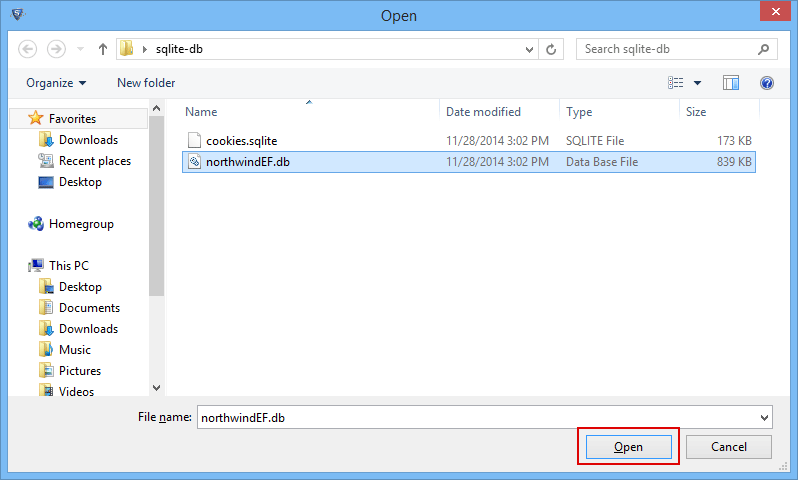

- #Restore data from .dbs file dbschema full#
- #Restore data from .dbs file dbschema code#
- #Restore data from .dbs file dbschema professional#
Corruption of a file header may result in the corruption of the MDF file. Network failure, while the SQL database is in use, may lead to the corruption of MDF files. While updating to the latest version of MS SQL Server. There can be multiple scenarios where you may be required to restore the database from MDF and LDF files in SQL Server. A Direct Ways for Restoring Database from LDF and MDF File. #Restore data from .dbs file dbschema professional#
Professional Methods to Restore Database from MDF and LDF.Approach 2: Using T- SQL to Restore Database from Primary Database File.Approach 1: Using SQL Management Studio.Reasons for Restoring MDF and LDF Files.This doesn’t use the StopAt command for restores – it simply doesn’t restore transaction logs that have this date/time in it. NVARCHAR(14) null – if you want to stop restoring logs as of a certain time, you can pass in a date/time pass in a date time like ‘20170508201501’.BIT, default=0 – whether or not to recover the database (RESTORE DATABASE WITH RECOVERY so that it is now usable).default=0 – whether or not you are continuing to restore logs after the database has already been restored without recovering it.BIT, default=0 – whether or not you want it to run DBCC CHECKDB after the restore, it assumes you are using Ola’s DatabaseIntegrit圜heck stored procedure.NVARCHAR(260), default=NULL – new location for the data file(s), used when NVARCHAR(260), default=NULL – new location for the log file, used when BIT, default=0 – whether or not you are testing restores, if set to 1 then it drops the database at the end.BIT, default=0 – whether or not you want to use a different location for the database files than what was used on the source server, leave off or set to 0 if using the same path as the source.
#Restore data from .dbs file dbschema full#
NVARCHAR(MAX) – full path with ending backslash where the LOG backups are stored.NVARCHAR(MAX) – full path with ending backslash where the FULL backups are stored.NVARCHAR(128), default=NULL – name of the restored database, can leave off or set to NULL if the restored name will be the source database’s name.NVARCHAR(128) – name of the source database.
#Restore data from .dbs file dbschema code#
It’s a simple enough fix but is not included in our code at this time.
Cleaned up the code to have consistency between upper and lower cases of variablesĭatabaseRestore may fail if you are not using SQL Server 2016 due to the extra columns that were added to and to support the new columns returned by RESTORE HEADERONLY and RESTORE FILELISTONLY commands. Added code to read the LSN information from the restored database and compare it to the LSN from the LOG backups when = 1 so that it can figure out which LOG file to restore and not throw an error for the LOG backups that were already restored. Added code to read the LSN information from the LOG backup and compare it to the LSN from the newest FULL backup so that it doesn’t fail when it tries to restore a LOG backup that is too early. Added columns to the table variables that store the output of RESTORE FILELISTONLY and RESTORE HEADERONLY since SQL Server 2016 has more columns in the output. Changed the data types of the input parameters to match system data types or to use the smallest data type. Added and in case the user needed to restore more LOG backups. Removed parameter as it wasn’t used in the code. Removed parameter and added and in case the files are stored in different base paths. Removed code that assumed that the FULL backups are copy-only backups. The following modifications were made to DatabaseRestore: Thanks GregWhiteDBA for making it open source! If you aren’t using Ola’s solution for your database backups, you could modify DatabaseRestore to support native backups or another backup solution. Sp_DatabaseRestore is an MIT-licensed open-source stored procedure that restores backups that were created using Ola Hallengren‘s DatabaseBackup solution. We could roll our own, but why reinvent the wheel if something already exists? We tried a couple of scripts, but GregWhiteDBA‘s DatabaseRestore stored procedure fit our needs and didn’t need a lot of modifications. In other words, we were looking for a custom Log Shipping solution. We also wanted it to be able to continue applying transaction log backups. 
We were looking for a script that restores a database including the transaction log chain using the backup files in a folder. Welcome to the sp_DatabaseRestore documentation page.






 0 kommentar(er)
0 kommentar(er)
